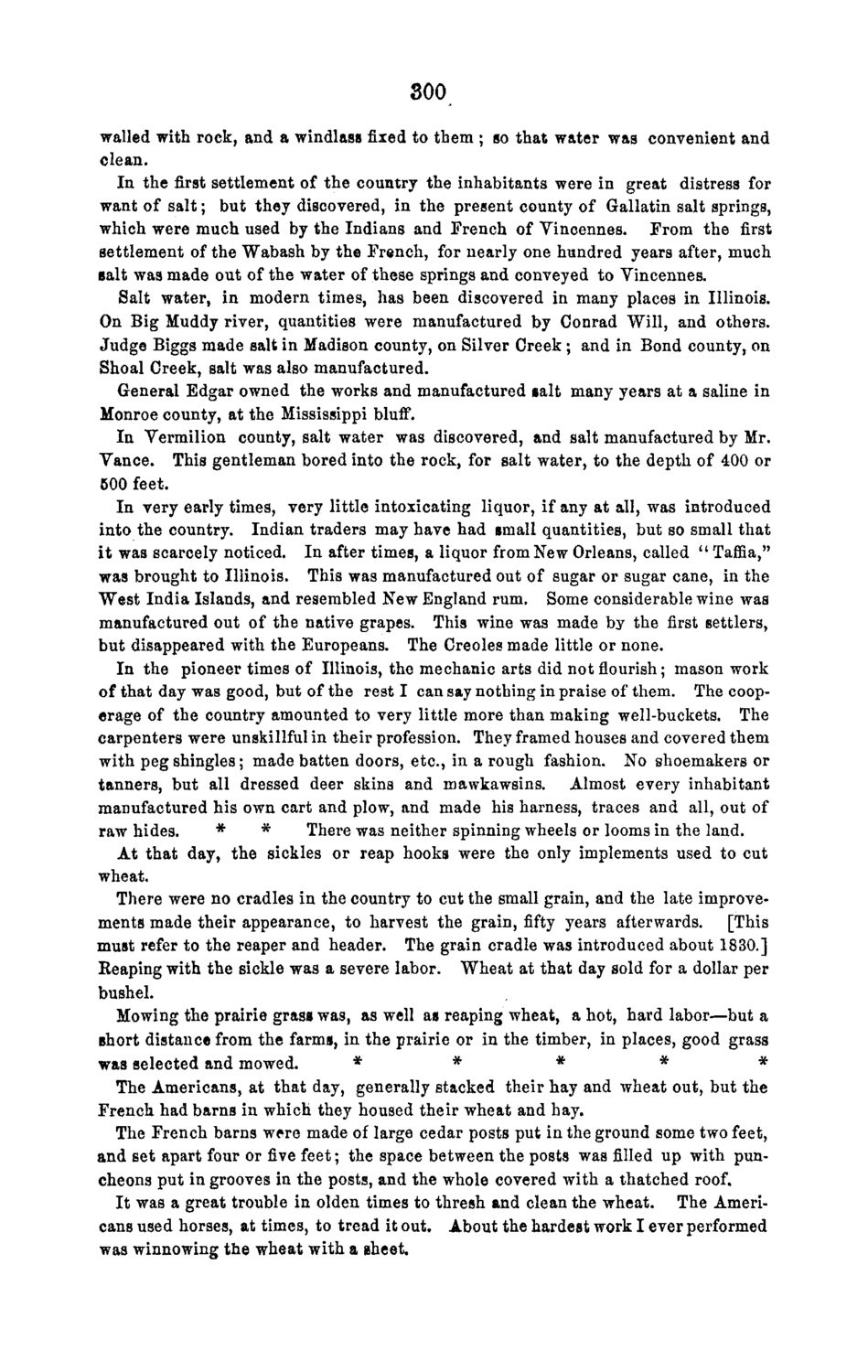| |
| |
Caption: Board of Trustees Minutes - 1868
This is a reduced-resolution page image for fast online browsing.

EXTRACTED TEXT FROM PAGE:
300 walled with rock, and a windlass fixed to them ; so that water was convenient and clean. In the first settlement of the country the inhabitants were in great distress for want of salt; but they discovered, in the present county of Gallatin salt springs, which were much used by the Indians and French of Yincennes. From the first settlement of the Wabash by the French, for nearly one hundred years after, much salt was made out of the water of these springs and conveyed to Yincennes. Salt water, in modern times, has been discovered in many places in Illinois. On Big Muddy river, quantities were manufactured by Conrad Will, and others. Judge Biggs made salt in Madison county, on Silver Creek ; and in Bond county, on Shoal Creek, salt was also manufactured. General Edgar owned the works and manufactured salt many years at a saline in Monroe county, at the Mississippi bluff. In Yermilion county, salt water was discovered, and salt manufactured by Mr. Yance. This gentleman bored into the rock, for salt water, to the depth of 400 or 600 feet. In very early times, very little intoxicating liquor, if any at all, was introduced into the country. Indian traders may have had small quantities, but so small that it was scarcely noticed. In after times, a liquor from New Orleans, called " Taffia," was brought to Illinois. This was manufactured out of sugar or sugar cane, in the West India Islands, and resembled New England rum. Some considerable wine was manufactured out of the native grapes. This wine was made by the first settlers, but disappeared with the Europeans. The Creoles made little or none. In the pioneer times of Illinois, the mechanic arts did not flourish; mason work of that day was good, but of the rest I can say nothing in praise of them. The cooperage of the country amounted to very little more than making well-buckets. The carpenters were unskillful in their profession. They framed houses and covered them with peg shingles; made batten doors, etc., in a rough fashion. No shoemakers or tanners, but all dressed deer skins and mawkawsins. Almost every inhabitant manufactured his own cart and plow, and made his harness, traces and all, out of raw hides. * * There was neither spinning wheels or looms in the land. At that day, the sickles or reap hooks were the only implements used to cut wheat. There were no cradles in the country to cut the small grain, and the late improvements made their appearance, to harvest the grain, fifty years afterwards. [This must refer to the reaper and header. The grain cradle was introduced about 1830.] Reaping with the sickle was a severe labor. Wheat at that day sold for a dollar per bushel. Mowing the prairie grass was, as well as reaping wheat, a hot, hard labor—but a short distance from the farms, in the prairie or in the timber, in places, good grass was selected and mowed. * * * * * The Americans, at that day, generally stacked their hay and wheat out, but the French had barns in which they housed their wheat and hay. The French barns were made of large cedar posts put in the ground some two feet, and set apart four or five feet; the space between the posts was filled up with puncheons put in grooves in the posts, and the whole covered with a thatched roof. It was a great trouble in olden times to thresh and clean the wheat. The Americans used horses, at times, to tread it out. About the hardest work I ever performed was winnowing the wheat with a aheet.
| |